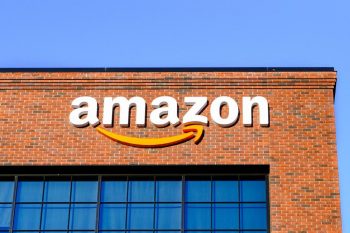
The Amazon River, the largest river by volume and the second-longest in the world, is a fascinating marvel of nature that supports an incredible amount of biodiversity and plays an essential role in the global climate system. This article delves into the intricacies of the Amazon River, its significance, unique features, connection to local communities, threats, and conservation efforts.
The title of the post seems to be incomplete or unclear, making it not possible to provide a quick answer. However, if the question is about why the Amazon River is significant, the answer would be: The Amazon River is the largest river by volume and the second-longest in the world, supporting an incredible amount of biodiversity. It plays an essential role in the global climate system, contributes to rainfall in regions that generate 70% of South America’s GDP, and provides a critical source of food and livelihoods for millions of people.
The Significance of the Amazon River
The Amazon River is a colossal force of nature that spans across multiple countries, including Brazil, Peru, Colombia, Ecuador, Bolivia, and Venezuela. It’s home to the largest and most biodiverse river system on the planet, carrying more than five times the volume of the world’s second-largest river, the Congo.
The Amazon Rainforest, which is found along the river’s shores, represents about half of Earth’s remaining rainforest and is the world’s largest biological reservoir, home to more than a million species. The rainforest creates 50-75% of its own precipitation, and its impact extends beyond the Amazon Basin, influencing rainfall in regions that generate 70% of South America’s GDP. The Amazon River and its tributaries are a critical source of food and livelihoods for millions of people.
Unique Features of the Amazon River
The Amazon River boasts several unique features that distinguish it from other rivers:
- It’s the largest river by volume, discharging around 200,000 cubic meters of water into the Atlantic Ocean every second.
- The river once flowed in the opposite direction, towards the Pacific Ocean, between 65 and 145 million years ago.
- The Amazon River basin is home to the largest rainforest on Earth, covering an area of about 2.7 million square miles.
- The river’s depth ranges from at least 66 feet to up to 330 feet at its deepest points.
- The Amazon River supports a diverse range of flora and fauna, including unique species such as the Amazon river dolphin (Inia geoffrensis).
These features make the Amazon River one of the most fascinating places on Earth.
The Amazon River: The “Lung of the Earth”
The Amazon River, often referred to as the “Lung of the Earth,” plays a crucial role in the global climate system. It is estimated that about one-fifth of all the water that runs off Earth’s surface is carried by the Amazon. The river is also home to more species of plants and animals than any other terrestrial ecosystem on the planet, with potential value to humans in the form of medicine, food, and other products.
The Amazon River and Biodiversity
The Amazon River supports a diverse range of flora and fauna, offering various habitats, including swamps, marshes, and streams. Each of these hosts different types of wildlife. The Amazon basin spans more than 6,000,000 km² and produces about 20% of the world’s freshwater discharge, containing the highest freshwater richness on Earth.
Threats and Challenges Facing the Amazon River
The Amazon River faces several major threats and challenges, including deforestation, damming, pollution, overfishing, climate change, lack of governance and law enforcement, infrastructure development, invasive species, and disease.
Local Communities and Indigenous People and the Amazon River
Local communities and indigenous people are deeply connected to the Amazon River, as it plays a crucial role in their daily lives, culture, and livelihoods. The Amazon River and its tributaries form the most intricate and biodiverse water system in the world, providing water, food, and resources to 34 million people, including 380 indigenous communities.
Conservation Efforts to Preserve the Amazon River
Several organizations are working on conservation efforts to preserve the Amazon River and its surrounding ecosystems. Some of these include Amazon Conservation, World Wildlife Fund, Conservation International, The Nature Conservancy, and Wildlife Conservation Society Brasil.
Conclusion
The Amazon River is a vital part of our planet’s ecosystem, contributing to global climate regulation, supporting an incredible array of biodiversity, and providing essential resources for millions of people. It’s crucial to continue efforts to protect and conserve this remarkable river and its surrounding ecosystems.
Frequently Asked Questions
How long is the Amazon River?
The Amazon River is approximately 6,400 kilometers (4,000 miles) long.
What countries does the Amazon River flow through?
The Amazon River flows through nine countries: Brazil, Peru, Colombia, Ecuador, Bolivia, Venezuela, Guyana, Suriname, and French Guiana.
Why is the Amazon River called the “Lung of the Earth”?
The Amazon River is often referred to as the “Lung of the Earth” because the Amazon Rainforest, which the river runs through, produces about 20% of the world’s oxygen.
What is the climate like in the Amazon River region?
The Amazon River region has a tropical climate, with high humidity and temperatures typically between 26°C (79°F) to 30°C (86°F). It also has a rainy season that can last up to nine months.
What are some of the unique species found in the Amazon River?
The Amazon River is home to many unique species, including the Amazon river dolphin, the Amazonian manatee, the giant river otter, and the pirarucu – one of the world’s largest freshwater fish.
What are some ways individuals can help conserve the Amazon River and its ecosystems?
Individuals can contribute to the conservation of the Amazon River and its ecosystems by reducing their carbon footprint, supporting sustainable products, donating to conservation organizations, promoting awareness about the Amazon’s importance, and advocating for policies that protect the Amazon.







